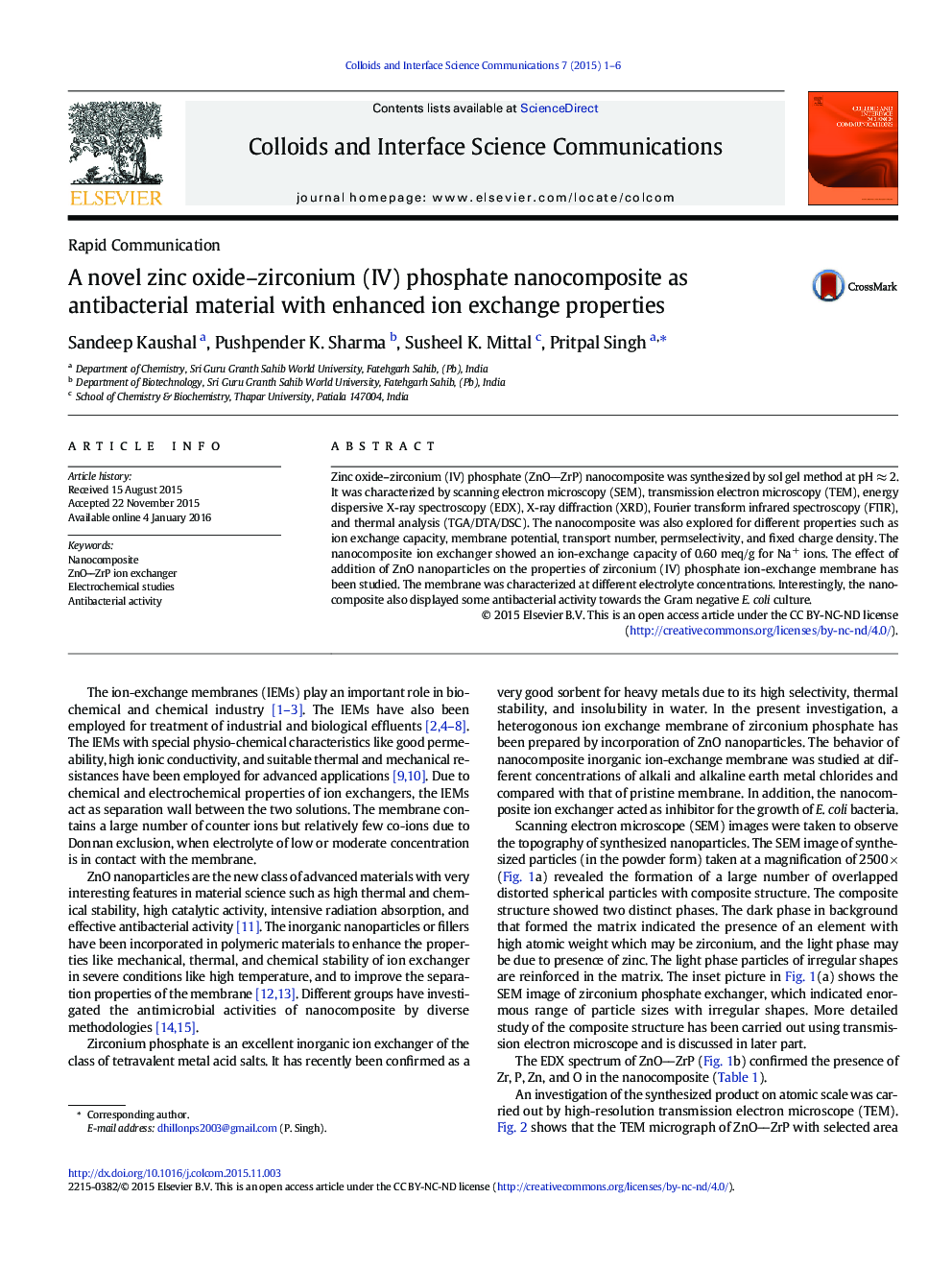| Article ID | Journal | Published Year | Pages | File Type |
|---|---|---|---|---|
| 591386 | Colloid and Interface Science Communications | 2015 | 6 Pages |
•Zinc oxide–zirconium (IV) phosphate (ZnO–ZrP) nanocomposite was synthesized and characterized by scanning electron microscopy (SEM), transmission electron microscopy (TEM), energy dispersive X-ray spectroscopy (EDX), X-ray diffraction (XRD), Fourier transform infrared spectroscopy (FTIR), and thermal analysis (TGA/DTA/DSC). the synthesized particles are of core-shell type, with core having a diameter of 70 ± 10 nm whereas the shell having a diameter of 10 ± 3 nm. The ion exchanger ZrP is amorphous in nature, but with addition of ZnO nanoparticles, the matrix assumes crystalline nature. The nanocomposite ion exchanger showed an enhanced ion-exchange capacity of 0.60 meq/g for Na+ ions. The nanocomposite displayed antibacterial activity towards the Gram negative E. coli culture
Zinc oxide–zirconium (IV) phosphate (ZnOZrP) nanocomposite was synthesized by sol gel method at pH ≈ 2. It was characterized by scanning electron microscopy (SEM), transmission electron microscopy (TEM), energy dispersive X-ray spectroscopy (EDX), X-ray diffraction (XRD), Fourier transform infrared spectroscopy (FTIR), and thermal analysis (TGA/DTA/DSC). The nanocomposite was also explored for different properties such as ion exchange capacity, membrane potential, transport number, permselectivity, and fixed charge density. The nanocomposite ion exchanger showed an ion-exchange capacity of 0.60 meq/g for Na+ ions. The effect of addition of ZnO nanoparticles on the properties of zirconium (IV) phosphate ion-exchange membrane has been studied. The membrane was characterized at different electrolyte concentrations. Interestingly, the nanocomposite also displayed some antibacterial activity towards the Gram negative E. coli culture.
